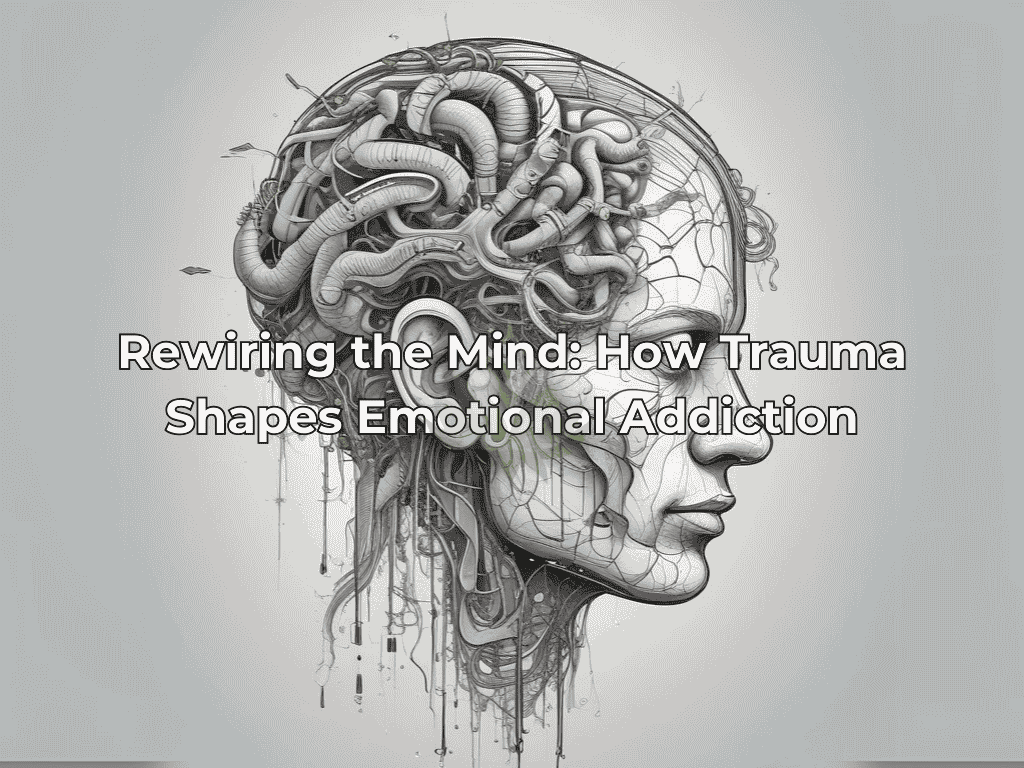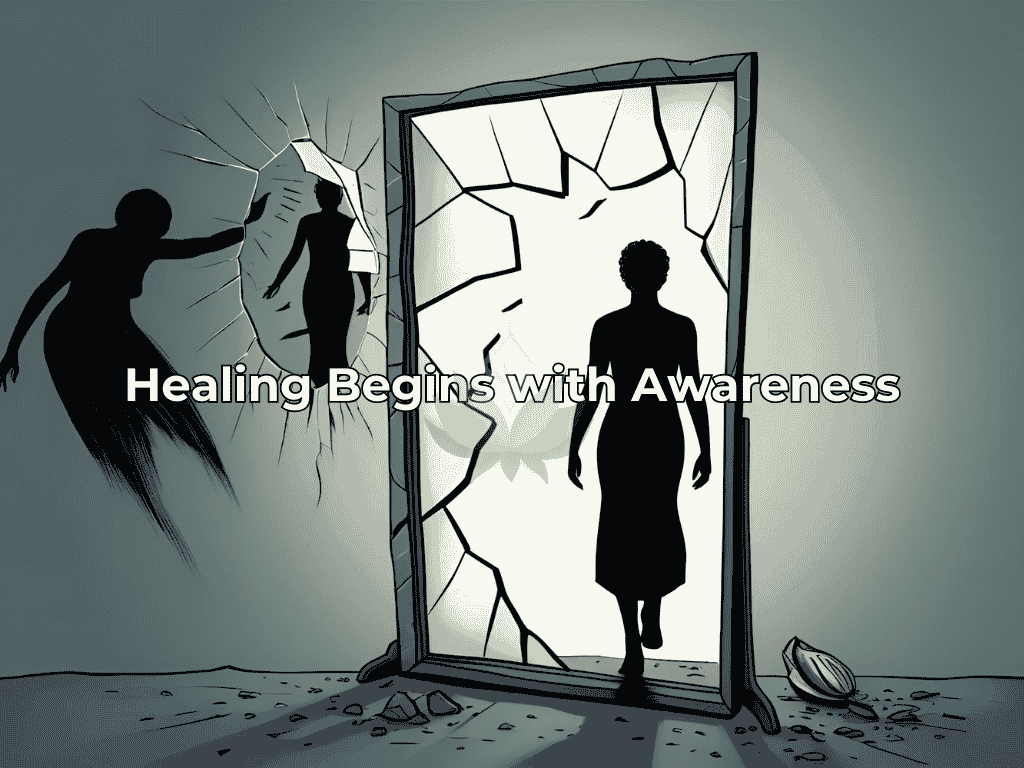Are You Addicted to Suffering?
Addiction to suffering is a hidden cycle that keeps many people stuck in toxic relationships, emotional pain, and self-destructive behaviors.
Even when life presents opportunities for happiness, some people unknowingly sabotage them. Their subconscious mind is wired to seek suffering.
This isn’t just a bad habit. It’s a subconscious addiction to suffering, where your brain and nervous system are wired for struggle.
✔️ Why do we repeat toxic patterns?
✔️ Why does suffering feel safe?
✔️ How can we break the cycle of suffering and rewire the brain for peace?
Understanding why we choose pain is the first step toward breaking free from emotional addiction and healing from past trauma.
How Trauma Wires the Brain for Suffering

The human brain adapts to its environment. If suffering, stress, or emotional pain has been a constant in your life, your brain starts treating these as “normal.”
Example: If love in your childhood was conditional, your brain learned that relationships require suffering. This means you may unconsciously seek partners who recreate that same dynamic, even if it hurts you.
How the Brain Becomes Addicted to Suffering:
✔️ Repeated emotional pain rewires the nervous system.
✔️ Cortisol and adrenaline create a stress addiction.
✔️ The brain prioritizes familiarity over happiness.
Over time, pain and struggle become a default setting in your nervous system—so when life is peaceful, your brain panics and tries to restore the chaos it knows.
The Hidden Reason Pain Feels ‘Safe’
One of the biggest reasons people struggle to break the cycle of suffering is biochemical addiction.
How Emotional Pain Becomes a Physical Addiction:
✔️ Stress and trauma release cortisol and adrenaline.
✔️ Your nervous system adapts to high-stress levels.
✔️ When things are calm, your brain feels “off.”
This is why:
- Some people create drama when life is peaceful.
- Happiness feels temporary—as if something bad will happen soon.
- Toxic relationships feel magnetic, while healthy love feels boring.
If suffering has been your emotional home, peace will feel like the unknown—and the brain avoids the unknown at all costs.
Why We Repeat Toxic Relationship Patterns
If you’ve ever asked, “Why do I keep choosing people who hurt me?”—the answer lies in your subconscious programming.
The Role of Subconscious Beliefs in Toxic Relationships:
✔️ If you believe love must be earned through suffering, you’ll be drawn to partners who make you prove your worth.
✔️ If you associate intensity with love, you may reject peaceful relationships as “not real.”
✔️ If past trauma taught you that suffering is normal, you may feel uneasy in healthy relationships.
This cycle is not about bad choices—it’s about programmed emotional addiction.
Signs You May Be Addicted to Suffering
You may be emotionally addicted to suffering if you:
✔️ Feel anxious when life is too calm or peaceful.
✔️ Attract toxic relationships that mirror past pain.
✔️ Struggle to feel worthy of happiness or stability.
✔️ Sabotage success, love, or opportunities without understanding why.
✔️ Constantly feel like you’re waiting for the “next bad thing” to happen.
The good news? This pattern is reversible.
How to Break the Cycle of Suffering

Healing from emotional addiction requires more than just self-awareness—it requires active reprogramming of your mind, body, and emotions.
Step 1: Recognize the Pattern
The first step is understanding that you are stuck in a cycle.
Ask yourself:
✔️ Do I feel uneasy in peaceful or stable situations?
✔️ Do I self-sabotage happiness and success?
✔️ Do I choose relationships that cause pain because they feel familiar?
If the answer is yes, your nervous system is addicted to suffering.
Step 2: Rewire the Brain for Peace
Your brain can be trained to feel safe in happiness.
How to Rewire Your Mind for Peace:
✔️ Practice mindfulness & deep breathing to calm the nervous system.
✔️ Use EFT tapping to release stored trauma and suffering.
✔️ Rewrite subconscious beliefs about love, happiness, and success.
EFT Tapping to Release Suffering Addiction:
Say this affirmation while tapping:
“Even though I feel drawn to suffering, I deeply love and accept myself. I choose to release this pattern and embrace peace.”
This rewires emotional addiction at a biological level.
Step 3: Break Toxic Relationship Patterns
If you want to break free from toxic relationships, you must:
✔️ Set boundaries with people who drain your energy.
✔️ Choose partners based on emotional safety, not intensity.
✔️ Recognize red flags and break the pattern early.
At first, healthy relationships may feel “boring.” But this is your brain adjusting to peace.
Step 4: Detox from Emotional Addiction
Just like a drug detox, breaking the addiction to suffering takes time.
✔️ Reduce stress-based habits that keep you in chaos.
✔️ Engage in activities that bring joy without drama.
✔️ Allow yourself to experience peace—without the urge to sabotage it.
Your body and brain must learn that peace is safe.
Step 5: Make Conscious Choices Toward Healing
Healing isn’t just about awareness—it’s about daily choices.
✔️ Surround yourself with people who bring peace, not pain.
✔️ Commit to self-care, emotional work, and healing techniques.
✔️ Let go of old stories that tell you suffering is necessary.
Breaking free from emotional addiction is a journey—but every step rewires your reality.
Final Thoughts: You Are Not Meant to Suffer Forever
The addiction to suffering is not your fault—but healing is your responsibility.
Your brain and body may be wired for struggle, but they can be rewired for peace.
By recognizing toxic patterns, healing trauma, and choosing emotional freedom, you can break free from the cycle of suffering—permanently.